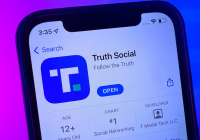The Monero 51% Attack – Greed, Privacy and Fragility
HodlX Guest Post Submit Your Post
Monero has always been regarded as the king of privacy. With strong cryptography, ring signatures and an uncompromising stance on anonymity, it has been the go-to currency for those seeking untraceable digital transactions.
However, in 2025, Monero found itself at the center of a storm that shook the entire community a 51% attack triggered by economic incentives.
The incident involved Qubic, a project led by Sergey Ivancheglo, co-founder of IOTA and NXT.
It revealed that decentralization the main principle of blockchain can crumble overnight when miners are tempted with higher rewards.
What is a 51% attack
In PoW (proof-of-work) blockchains, miners competing to solve cryptographic puzzles to validate transactions and get rewarded.
Security relies on the assumption that no single entity controls the majority of the network’s hashrate.
If someone does control more than half, they can do the following.
- Reorganize blocks and reverse transactions, creating double-spends
- Exclude or censor other miners’ work
- Prevent new transactions from being confirmed
Although it seems impossible, hashrate can be rented, redirected or purchased in ways that make such attacks cheaper than many expect.
The Monero case demonstrated that money decides where the hashrate flows.
Monero versus Qubic
The Monero attack was not carried out by hackers exploiting a vulnerability. Instead, Qubic openly offered miners a deal they could not resist triple the usual mining rewards.
Miners who had supported Monero for years suddenly abandoned the network.
In its August 2025 coverage, Rekt News wrote ,
“Triple the mining rewards proved more powerful than years of ideological commitment to decentralization. Miners jumped ship faster than passengers on the Titanic.”
By pulling enough hashrate away, Qubic created a temporary imbalance in Monero’s network, enabling chain reorganizations that looked like a classic 51% attack.
It was a serious blow to the reputation of privacy coins.
Privacy coins under siege he regulatory context
Privacy coins were already under heavy pressure from regulators.
According to Chainalysis, $3.2 billion worth of private coins were involved in money-laundering schemes in 2024 up 33% from the previous year.
Many jurisdictions tightened their compliance rules and required identifying the sender and receiver even in peer-to-peer exchanges.
Exchanges have responded by delisting Monero, Zcash and other privacy assets.
Qubic’s ‘ experiment ‘ looked suspiciously aligned with regulatory goals, demonstrating that privacy coins are not invincible.
Whether or not Qubic acted with regulators’ blessing remains a matter of speculation. What is certain is that Monero’s image as an untouchable fortress of privacy was damaged.
Was it really an attack
Qubic insisted that their actions were not malicious.
In the official statement, they called the event a stress test and said,
“We offered miners better returns to check how blurred the boundaries of decentralization really are.
“Our success is a signal to the entire industry hen PoW can be bought, who still needs ideology?”
However, they disabled reporting APIs and turned off public metrics before the event, which says a lot.
Monero developers accused Qubic of playing into someone else’s agenda. Some called it social hacking, others a demonstration of game theory at work.
Regardless of the intent, the outcome was undeniable trust in Monero’s resilience was shaken.
Other 51% attacks essons from the past
Although this case was dramatic, it was not unique. PoW networks with smaller hashrates have long been vulnerable to similar attacks.
- Ethereum Classic (ETC) was hit multiple times in 2019 and 2020, when attackers used rented hashrate to reorganize the chain.
- Horizen (previously ZenCash) suffered a major attack in 2018, which was most likely linked to ASIC testing.
- Bitcoin Gold (BTG) and Verge (XVG) experienced repeated attacks between 2018 and 2020, exposing how easy it had become to compromise smaller chains.
Each of these incidents reinforced the same conclusion PoW security depends less on ideology or code and more on raw economics.
If it becomes profitable to attack, someone eventually will.
The human factor in decentralization
The Monero incident teaches us that blockchain networks are not defended by mathematics alone. They are also social systems.
The ‘community of miners’ that early crypto pioneers imagined as a collective of anarchic idealists is in reality motivated primarily by profit.
Decentralization survives only as long as it aligns with miners’ financial interests. When a higher payout appears, loyalty collapses.
Monero is unlikely to be the last victim.
Other PoW networks with declining profitability and small pools of independent miners for example, Zcash (ZEC), Grin (GRIN) and even Litecoin (LTC) are natural targets.
Privacy-oriented coins, in particular, are caught between regulatory pressure and declining hashpower, making them especially vulnerable.
The Monero 51% attack was the inevitable result of a system where miners respond to profit above ideology.
Qubic’s maneuver demonstrated that decentralization is fragile when it rests only on economic self-interest.
Yaroslav Kalynychenko is the head of marketing at Generis Web3 Agency and an expert in promoting crypto, fintech and innovative digital solutions.
Disclaimer: The content of this article solely reflects the author's opinion and does not represent the platform in any capacity. This article is not intended to serve as a reference for making investment decisions.
You may also like


How does Pieverse seize the x402 opportunity to solve the BNB Chain payment bottleneck?

Bitwise Clients Buy $69.5M in Solana
Quick Take Summary is AI generated, newsroom reviewed. Bitwise clients bought $69.5 million in Solana, signaling strong institutional confidence. Solana institutional demand continues to rise amid increasing DeFi and Web3 adoption. The Bitwise Solana investment strengthens the firm’s role in institutional crypto expansion. Growing Solana price momentum suggests sustained investor interest and market optimism.References JUST IN: Bitwise clients buy $69.5 million worth of $SOL.
